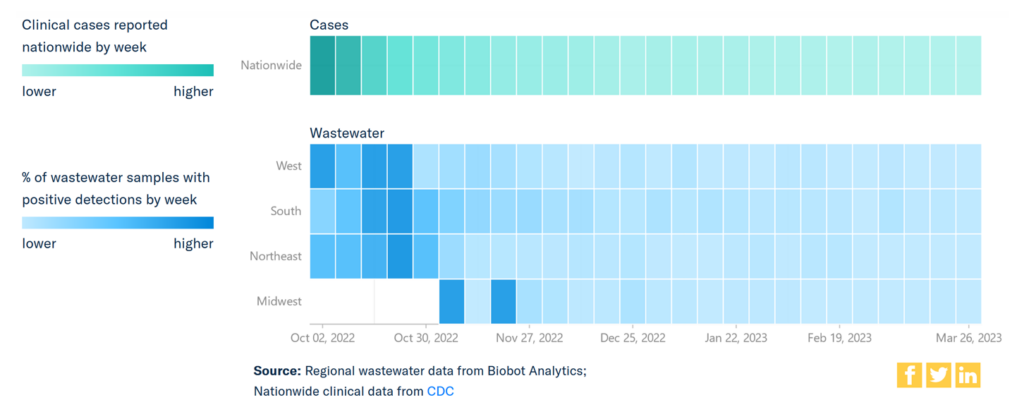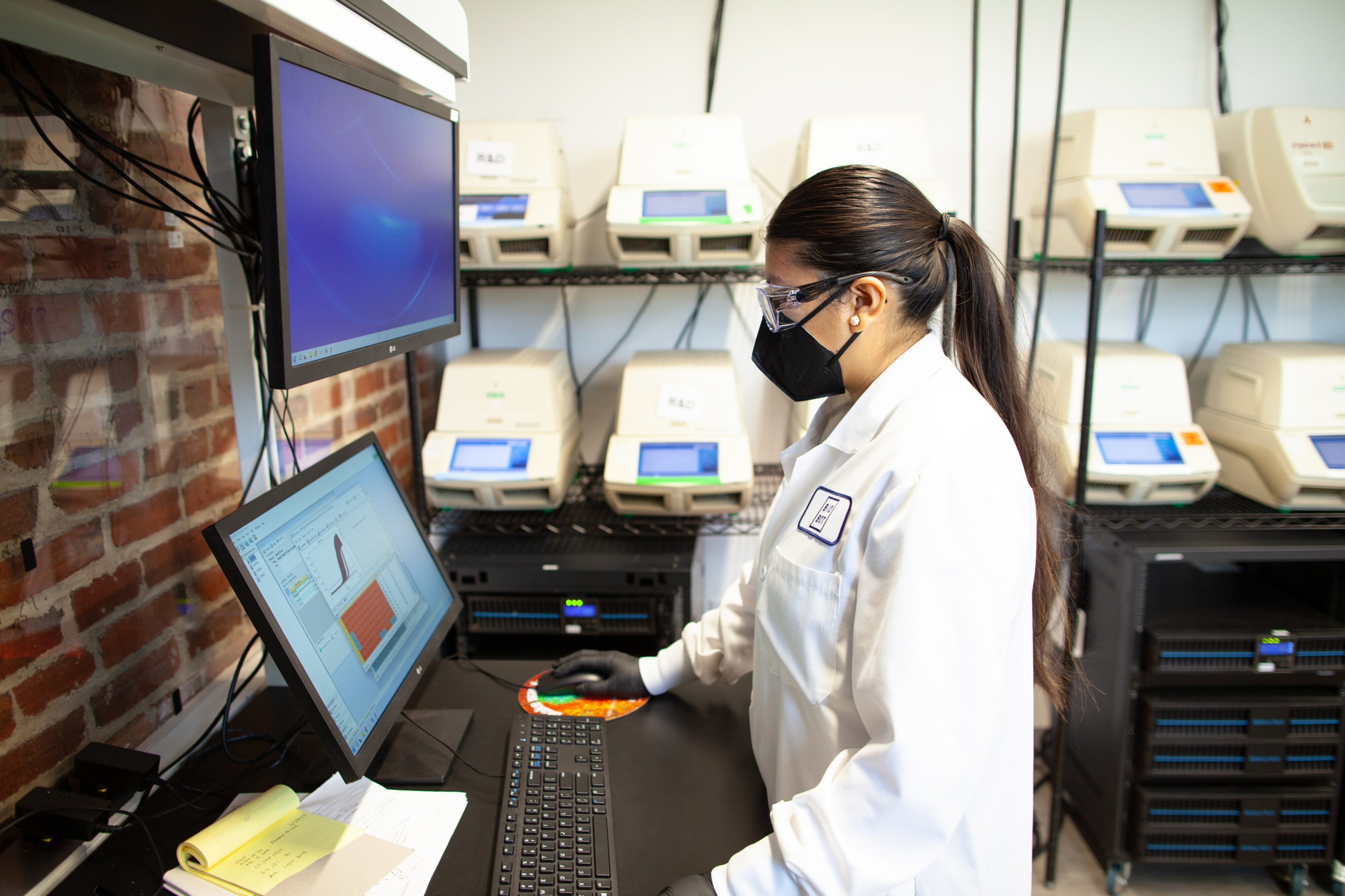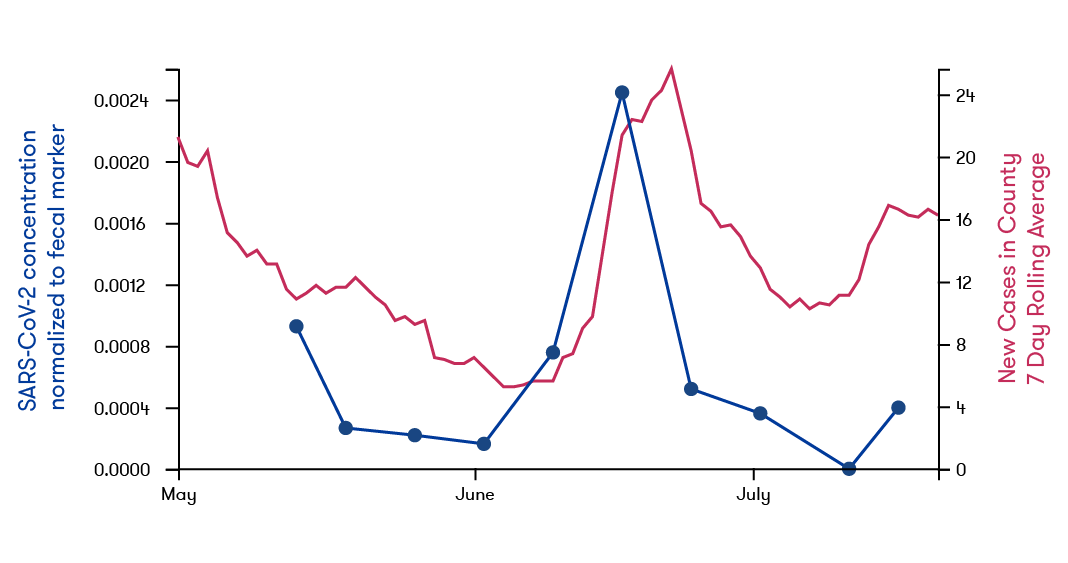
Blog
Preparing for Future Mpox Outbreaks Through Wastewater Intelligence

April 26, 2023
As the mpox virus (MPXV) started spreading in the U.S. in early summer 2022, using wastewater intelligence to help monitor the disease became a top priority. Our team quickly got to work building an assay to detect MPXV in wastewater, incorporated this analysis into our existing CDC vendor contract for SARS-CoV-2, and recently launched a mpox wastewater monitoring dashboard on our website.
So what does it take to go from identifying an emerging pathogen in wastewater to building a scalable assay and launching a public dashboard?
How does wastewater detection differ between MPXV and SARS-CoV-2?
To build an assay for scale, we first needed to understand how wastewater detection of MPXV was similar to, but also different from SARS-CoV-2. While both are infectious viral pathogens, they are distinct at a molecular level. Additionally, there are a number of differences in symptoms, transmission, and fecal viral shedding between the two viruses. These all impact the amount of each virus ultimately circulating in wastewater in any location, at any given time.

- MPXV is a double-stranded DNA virus, made up of 200 kilobases of nucleic acids
- SARS-CoV-2 is a smaller, single-stranded RNA virus, with just 30 kilobases of nucleic acids
- The MPXV genome is almost seven times longer than the SARS-CoV-2 genome
- MPXV is typically transmitted via skin to skin contact, while SARS-CoV-2 transmission is airborne
- Fecal viral shedding rates also differ between the viruses—ultimately the amount of virus shed into wastewater is much smaller for MPXV than for SARS-CoV-2
Because of these factors, our team expected to find much lower levels of MPXV in wastewater compared to SARS-CoV-2. Understanding this helped inform our assay development and scaling.
Building an mpox wastewater monitoring system
We conducted numerous experiments to identify the best approach to monitor for MPXV in wastewater. Our R&D team focused their efforts around two main points: developing an accurate and scientifically rigorous assay, and ensuring the feasibility of implementing the assay quickly and at scale.
After weighing the pros and cons of several extraction protocols, we settled on a Ceres Nano bead large volume extraction protocol with qPCR quantification. This method allowed us to efficiently implement volume, as it aligned with both our current laboratory protocols for SARS-CoV-2 and it didn’t require additional collection work for our plant operator partners.

Once we developed and validated our MPXV assay and protocol, the next step was to support testing capacity for mpox at facilities enrolled in the CDC NWSS program for SARS-CoV-2. We started reporting MPXV data back to the CDC on October 15, 2022, and we currently test for MPXV at ~400 locations across almost all 50 U.S. states.

Launching our mpox wastewater monitoring dashboard
Most recently, our team launched a new mpox wastewater monitoring dashboard for the U.S., available on our public data website. This dashboard displays the percentage of positive MPXV detections per week in wastewater samples taken from across the U.S, grouped at a regional level. Wastewater data is shown next to mpox case data, reported nationwide by week.

Preparing for future pandemics with wastewater intelligence
The lessons that we learned from scaling up the MPXV assay are invaluable in preparing for future emerging or re-emerging pathogens in wastewater. Being able to provide reliable data quickly is crucial for public health action and policy implementation.
By monitoring for pathogens on a regular basis, we can create an essential baseline against which to measure all future outbreaks. Wastewater is an inherently anonymous and inclusive data source — populations that may be reluctant to report symptoms or get tested because of disease stigma, as well as populations without reliable access to healthcare, and those with asymptomatic infections will all still be counted through wastewater analysis.
Wastewater is an inherently anonymous and inclusive data source. By monitoring for pathogens on a regular basis, we can create an essential baseline against which to measure all future outbreaks.
Biobot Analytics
Our wastewater intelligence platform provides infectious disease insights that improve equity in community health, and help us proactively prepare for the next pandemic.
Written by Biobot Analytics
Biobot provides wastewater epidemiology data & analysis to help governments & businesses focus on public health efforts and improve lives.





